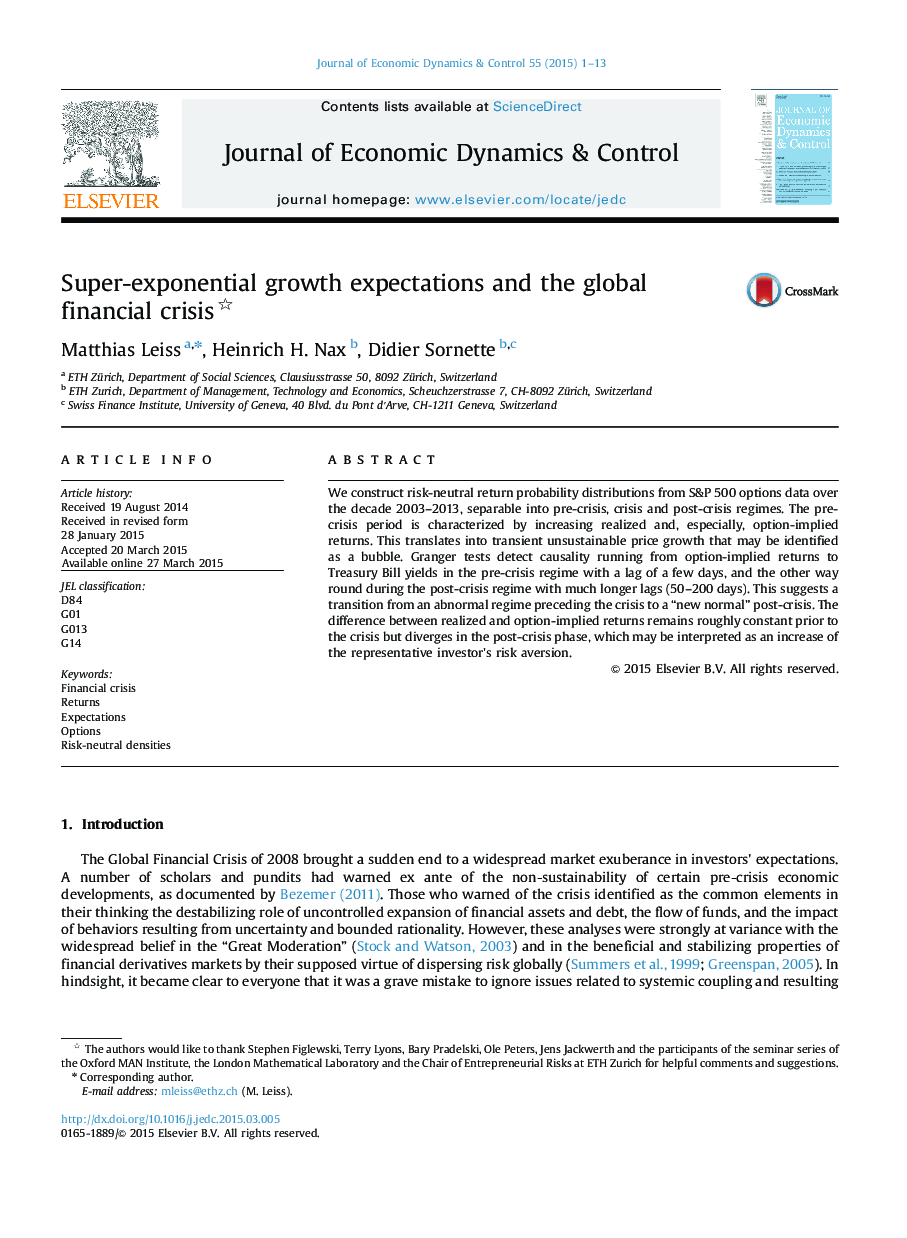| Article ID | Journal | Published Year | Pages | File Type |
|---|---|---|---|---|
| 5098253 | Journal of Economic Dynamics and Control | 2015 | 13 Pages |
Abstract
We construct risk-neutral return probability distributions from S&P 500 options data over the decade 2003-2013, separable into pre-crisis, crisis and post-crisis regimes. The pre-crisis period is characterized by increasing realized and, especially, option-implied returns. This translates into transient unsustainable price growth that may be identified as a bubble. Granger tests detect causality running from option-implied returns to Treasury Bill yields in the pre-crisis regime with a lag of a few days, and the other way round during the post-crisis regime with much longer lags (50-200 days). This suggests a transition from an abnormal regime preceding the crisis to a “new normal” post-crisis. The difference between realized and option-implied returns remains roughly constant prior to the crisis but diverges in the post-crisis phase, which may be interpreted as an increase of the representative investor׳s risk aversion.
Related Topics
Physical Sciences and Engineering
Mathematics
Control and Optimization
Authors
Matthias Leiss, Heinrich H. Nax, Didier Sornette,
